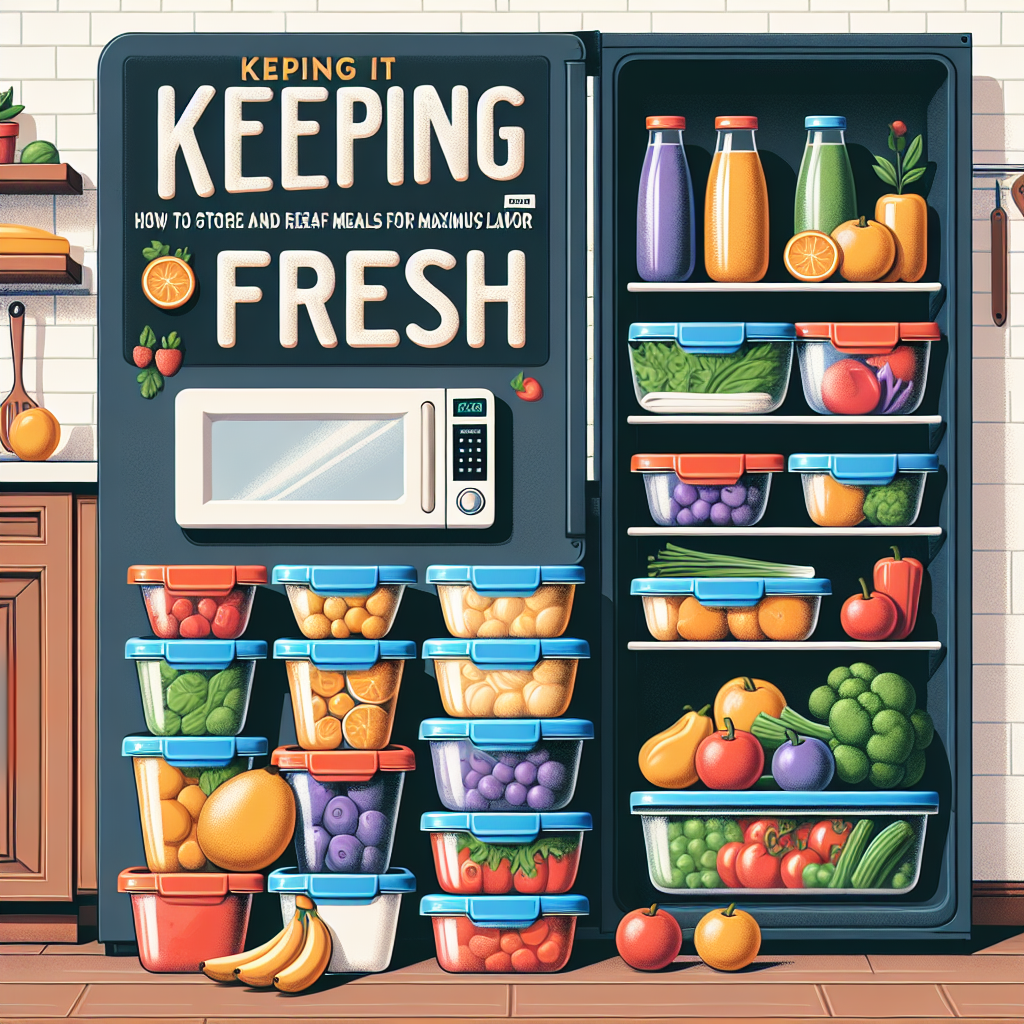In today’s fast-paced world, meal preparation is a savvy strategy for saving time and enjoying delicious homemade meals. However, to ensure your food remains flavorful and appetizing, proper storage and reheating are essential. This article provides practical tips for keeping your meals fresh, preserving their taste, and making your dining experience delightful.
Understanding the Science of Food Storage
The way we store food can significantly influence its taste, texture, and nutritional value. When cooked meals are improperly stored, they can become dry, bland, or spoil quickly. Familiarizing yourself with the basics of food storage helps you maintain the fresh flavors and nutrients in your meals.
The Importance of Air: Why Airtight Containers Matter
Oxygen is one of the main culprits of flavor loss in stored food. When air reaches your leftovers, it causes oxidation, leading to spoiled food. Investing in high-quality airtight containers can help seal in flavors while keeping out moisture and microorganisms. Glass containers with tight-fitting lids are excellent choices as they are non-reactive, durable, and microwave-safe.
Temperature Control: The Key to Freshness
Proper temperature control is vital for food preservation. Make sure to refrigerate leftovers within two hours of cooking. Foods should be stored below 40°F (4°C) in the fridge to minimize the growth of harmful bacteria. For long-term storage, consider freezing meals in single portions, maintaining their freshness for several weeks.
Best Practices for Storing Leftovers
To keep your meals fresh and flavorful, here are some top tips for storing your leftovers:
Labeling is Everything
Label your containers with the date and meal name to help you keep track of what you’ve stored and when it needs to be eaten. This simple step can prevent waste and ensure you enjoy your meals while they’re still at their best.
Avoid Overpacking Containers
Although it might be tempting to cram as much food as possible into a container, this practice can hinder even cooling or reheating. Leave a little space at the top for expansion, and separate different food types to prevent flavor mixing.
Use the Right Materials
Choose the proper storage materials for your food type. For instance, while some foods can be safely frozen in plastic wrap, others may fare better in glass containers or freezer bags. Research which materials are best for various foods to maintain their flavors.
Reheating Meals: Keeping the Flavor Alive
Reheating food properly is just as critical as how you store it. If done incorrectly, you risk losing the nuances of flavor and texture that made the dish enjoyable in the first place.
Slow and Steady Wins the Race
When reheating meals, especially larger portions or casseroles, consider using lower temperatures and longer heating times. This approach allows for even warming without overcooking or drying out the meal. A microwave can be convenient, but it may produce uneven heat. Instead, consider using the oven or stovetop for more consistent results.
Add a Splash of Moisture
To combat the drier texture that can occur during reheating, add a splash of water or broth to your meals before warming them. For instance, drizzle a little broth over leftover rice or pasta, cover the dish, and heat gently. This simple addition can breathe new life into your leftovers.
Stir Thoroughly for Even Heat
Whether using a microwave or stovetop, stirring your food halfway through the reheating process helps ensure that it heats evenly. This prevents certain areas from becoming too hot or too cold, allowing for a uniformly warm meal.
Creative Ways to Transform Leftovers
Don’t let those leftovers go to waste! Transforming them into new meals can maximize flavor and creativity in your kitchen.
Reimagine with Sauces
Transform simple leftovers into exciting dishes by introducing fresh sauces or dressings. A splash of homemade pesto, a drizzle of balsamic glaze, or a dollop of salsa can elevate even the simplest meals.
Create Side Dishes
Leftover proteins can be integrated into salads, wraps, or grain bowls. Add seasonal vegetables, nuts, and grains to give them a fresh twist. This not only reduces waste but also makes for a flavorful and varied meal.
Conclusion: Savoring Every Bite
Storing and reheating meals with care is crucial for preserving flavors and enjoying your culinary creations to the fullest. By understanding the science behind food storage, employing best practices, and getting creative with leftovers, you can keep your dishes fresh and tasty. Ultimately, your ability to savor every bite of your meals while keeping food waste at bay will make your mealtime experience all the more rewarding.
Embrace the joy of meal prep, and keep it fresh—your taste buds will thank you!


